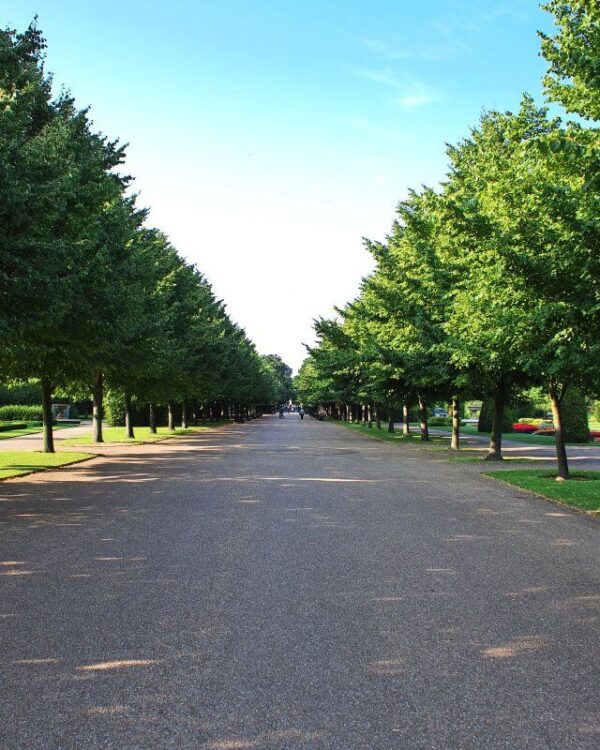Panthéon Paris Basic Information
The Pantheon is one of the most popular tourist attractions in Paris, and receives over six million visitors each year. It is particularly renowned for its massive dome, which is one of the largest of its kind in the world. The interior of the Pantheon is also very impressive, with its ornate decoration and numerous paintings and sculptures. Today, the Pantheon is one of the most iconic symbols of the city of Paris.
History of the Pantheon Paris
The Pantheon in Paris is one of the most famous and iconic buildings in the city. It was originally built as a church in the early 18th century, but has since been converted into a secular mausoleum. It is a resting place for many notable people, including Voltaire, Jean-Jacques Rousseau, Victor Hugo, Alexandre Dumas and Pierre and Marie Curie. The Pantheon is an incredibly popular tourist destination, and is one of the most visited monuments in Paris.
Pantheon Paris Exterior
The Pantheon was designed by architect Jacques-Germain Soufflot and completed in 1790. The exterior of Paris Pantheon is quite striking. It is a large, round building with a portico supported by columns. There are also statues of various French worthies around the outside of the building. The most notable feature, however, is the large dome overhead. This dome is one of the largest in the world and is made of glass and metal. It is also very distinctive because it has a hole at the top that lets in natural light. This makes the Pantheon a very bright and airy space inside.
The Dome
The facade of the Paris Panthoeon is pretty impressive. It’s made of white marble, and it has a portico with eight columns that are Corinthian in style. Above the portico, there’s a pediment with a fresco of The Apotheosis of Saint Genevieve. And if you look up, you’ll see that the dome is actually triple – the domes fit within each other.
The Facade
The facade of the Panthéon also features sculptures of several notable people (scientists, statemens or philosophers) and includes Voiltaire, Bichat and Napoleon with soldiers. Above the main entrance is an inscription which reads, “Aux grands hommes la patrie reconnaissante” (“To great men, the grateful nation”).
Pantheon Paris Interior
The Pantheon is one of the most striking examples of neoclassical architecture in Paris. Its rotunda, which is supported by a ring of Corinthian columns, soars to a height of over 80 feet. The dome is adorned with a series of windows that allow natural light to flood into the space. The central rotunda is surrounded by an inner sanctum.
Foucault Pendulum
The Panthoeon in Paris is home to a number of interesting artifacts, but one of the most fascinating is the Foucault Pendulum. Named after its inventor, French physicist Léon Foucault, the pendulum is a large metal ball that hangs from the ceiling and swings back and forth. As it swinging, it gradually rotates, providing a visual demonstration of the Earth’s rotation. The pendulum was first installed in the Pantheon in 1851, and it has been a popular attraction for tourists and locals alike ever since.
Pantheon Paris Location
The Pantheon Paris (Le Panthéon) is a large church located in the Latin Quarter of Paris, in the 5th arrondissement. Some attractions nearby include the Jardin du Luxembourg, the Sorbonne University, and the Cathedral of Notre Dame.
How to Get to Paris Pantheon?
The best way to get to Pantheon Paris is by using the metro system and getting off at the Maubert-Mutualité station by the Line 10. The station is located within 5-minutes walking distance from the Pantheon. The Pantheon in Paris is an interesting and unique place to visit. It’s not only a beautiful and well-maintained building, but it also has a lot of history behind it. If you’re interested in architecture, history, or just want to see a fascinating building, then Pantheon Paris is definitely worth visiting.
Similar Posts:
- Facts About Palais Garnier: a Famous Opera House in Paris
- Basilique du Sacré-Coeur (Sacré-Cœur) in Montmartre: One of the Most Visited Churches in the World
- A Guide to the Latin Quarter, Paris: Top Attractions and Practical Info for Visiting the Quartier Latin
- Les Invalides, Paris. Plan Your Visit to Les Invalides in Paris. See Hotel des Invalides, Tombs, and Military Museum
- A Beautiful Skyline With 30 St Mary Axe: Facts About the Gherkin London
- The Petit Palais: Exploring the City of Paris’ Museum of Fine Arts (Musée des Beaux-Arts de la Ville de Paris)
- The Église Saint-Sulpice: Exploring the Saint Sulpice Church in Paris, Known for Its Organ and Eugène Delacroix Murals
- Paris Neighborhood Guide: The 20 Paris Arrondissements and What Makes Each of Them Special



